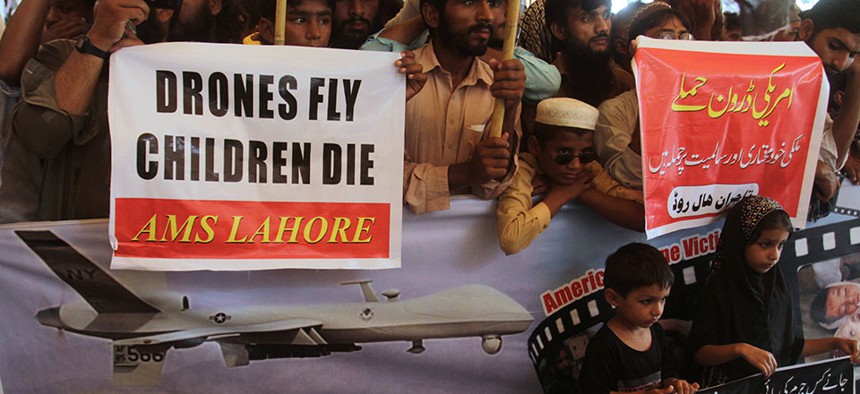
A rally protesting U.S. Drone strikes in Waziristan K.M. Chaudary/AP
How Pakistan Can Stop Drone Strikes
The attacks' intensity varies with the internal politics of the targeted states.
The picturesque valleys of Pakistan's Gilgit-Baltistan are overlooked by the immense snowcaps of Nanga Parbat. At more than 26,000 feet, it is the world's ninth tallest mountain, but for alpinists it is a challenge far greater than Everest. It's a rare mountaineer who is unaware of its reputation as "the killer mountain." The notoriety derives from its deadly avalanches and crevasses, but the death that was visited on a group of climbers last month took a much different form. Eleven mountaineers were killed when militants affiliated with the Pakistani Taliban entered their basecamp and unleashed a deadly fusillade.
The assailants claimed the slaughter was retaliation for a June 7 drone strike that killed the Taliban deputy leader Waliur Rehman. Unlike the mountaineers, Pakistan was braced for the attack. Only the location came as a surprise.
Earlier in the month, when the newly elected Prime Minister Nawaz Sharif took office, he had used his inaugural address to ask the U.S. to refrain from further attacks in Pakistan. It took less than 48 hours for the CIA to ignore his demand and launch the deadly strike that killed nine, including the Taliban leader. Pakistanis were incensed. It was more than a breach of the country's sovereignty; it was also an intervention in its politics and an invitation to further violence.



